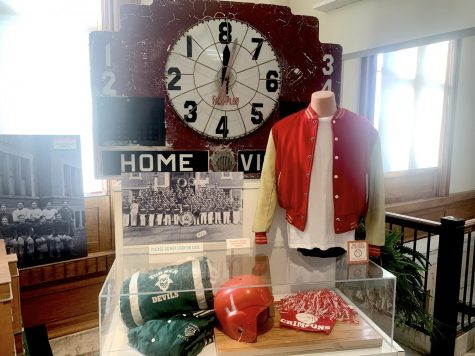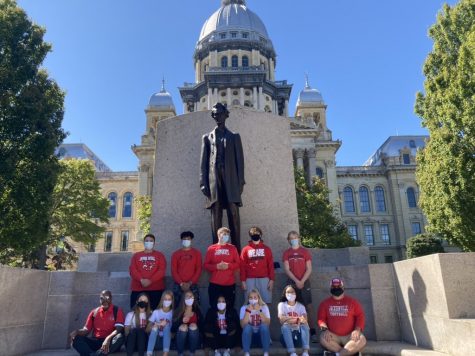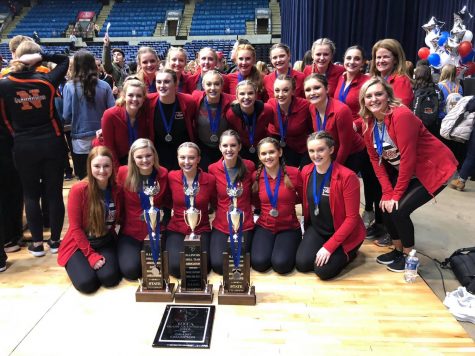The Philippines: The World’s Dollar Store
December 18, 2015
Somewhere between the Pacific Ocean and the South China Sea, there lies a series of 5,000 islands connected together by an invisible tether and unified government. Under the same leadership maybe, but each of these islands carries a different brand of humans with different lifestyles and reasons for living. Over 98 million people share these islands, and for two and a half weeks, I joined them, stumbling my way around in an attempt to figure out how this unique country does what it does.
Upon landing into the country and walking around the airport, one gets to experience the extreme humidity of the place. Being closer to the equator than any of the states, the Philippines commonly experiences very high temperatures with an absolutely relentless humidity. Even with such hot weather, air conditioning, which is basically guaranteed with any building in the United States, is commonly rejected for open air windows. After leaving the airport and driving around Manila, the capital city, it isn’t hard to notice many differences like different facilities and driving styles. The driving style I remember seeing most often is the “drive very fast, ignore all signs, and try not to crash and die” style. Unlike the U.S., where traffic laws are enforced heavily, simple driving concepts created for the safety of those around you like stop signs, turn signals, and lane markers are mere suggestions to Filipino drivers.
While fearing for your life, you just might see the large variety of vehicles the roads in the country has to offer. My family and I rode around in a large family van which could fit up to ten people. These large vans are more common than cars or trucks, as they can carry a large amount of people and go considerably fast. Large coach buses are also common to see and use if one wishes to travel long distances. But to truly get the full experience Filipino transportation has to offer, one would want to try out the myriad of vehicles that give a more up-close and personal view of the surroundings. Tuk-tuks, or tricycles as the natives lovingly refer to them as, are simply motorcycles with metal side cars attached to them. The small and agile vehicles function as open air taxis, allowing anyone to hop in and get to a certain destination quickly. Being more maneuverable than a car, these “tricycles” are perfect for speeding down narrow alleyways or squeezing into tight gaps of inter-city traffic. Tuk-tuks are great, but the undisputed king of the Filipino roads is the humble Jeepney.
Akin to a literal human sardine can, the Jeepney captures the full essence of what it means and what it feels like to live and travel in the Philippines. Although I’ve only ridden in one of these twice, two times is more than enough for me. Jeepneys are old, WWII Jeeps refitted with newer engines and given colorful and quirky decals, faceplates, and names that make each one stand out from another. Jeepneys are transit buses with personality. Like a bus, they pick up passengers from a station and drop them off in various locations as part of routine. However, the full process is much more tedious and uncomfortable. Essentially, a Jeepney does not depart from a station until the entire cavity of the back seating area is full. This means that up to thirty people must be crammed and stuffed into the back like luggage until the Jeepney begins its rounds. Leg room, sitting room, and breathing space are all compromised for the ability to do more work in a quicker manner. When riding in one, you can seriously feel the sweat inching its way down your face as the body heat from twenty-nine other individuals, centimeters away from you, swallows you whole. Already in a sweltering landscape, the immense heat was too much to bear and by taking only two twenty minute rides, I suffered from heatstroke for a few days. Jeepneys are novel and entertaining things to look at, but riding one is much less fun.
The Philippines is an island nation full of contradictions. This is evident as soon as you begin seeing people and places. The reason I spent so much of the article describing vehicles is because my family didn’t really get a chance to walk around and see sights and meet locals up close. We were told that it would be too dangerous to walk around while having so much money on hand. The Filipino economy is an American economist’s worst nightmare. Filipino citizens have been living under the idea that over time, the rich should get richer and that the poor should get poorer. This, in turn, has created a massive schism in socio-economic classes. Basically, there are dirt poor people and gold rich people. As an American, I was automatically assigned into the latter of the two classes since our first-world currency is much more valuable than the Philippine’s third-world currency. The exchange rate was 50 Filipino pisos to one American dollar. To put this into perspective, a high-class condominium valued at one million pisos, would cost around $20,000. Therefore, all of the teachers and many of the students attending our school would be multi-millionaires in the Philippines.
Food was easy to come by. We primarily ate fast food and that in the Philippines means that we ate a lot of fried chicken. Every fast food place, or restaurant, serves fried chicken. Even restaurants that would never sell fried chicken in the states, like McDonalds or Wendy’s, serves fried chicken. The food was incredibly affordable. A two-piece chicken meal which would cost around four dollars in the states costs around half the price in the Philippines. Everything sold in the Philippines applies to this as well. High-end clothes, electronics, and even household appliances all became suddenly affordable. Of course, we didn’t waste all of our money on material possessions because the real reason we came was to give some possessions.
For a few weeks before the trip, my family began collecting items to give away to many different people in the country we were supposed to meet up with. These items included video game consoles, clothes, small appliances, cosmetics, and even twenty pounds of chocolate. All of these items were selected specifically because while they were easy to get in the U.S., these items are particularly difficult to come by in the Philippines. By the time we were ready to leave, we had around eight fully-packed suitcases filled with care packages. Our first stop on the mission of charity was my mother’s childhood home, which is now the abode of her brother and cousins. It was definitely jarring to enter the house, (which is considered upscale for commoners in the Philippines), that had no windows. In place of windows were metal bars to keep out intruders, and like I said before, no air conditioning. After stopping there, it was back to the hotel, which was swarming with beggars. It was especially heartbreaking to see a small child holding his hand out, asking for centimos which are Filipino cents. 100 centimos make one piso. After handing a child a bundle of coins which were ultimately worth less than a few pennies, he responded back with “Salamat Po,” or thank you.
It has been a jarring experience to say the least. To go from middle-class in America to a wealthy aristocrat within the time span of a twelve-hour flight is such a weird concept. The entire trip was filled with strange sights, foods, and experiences, and I will try my best to retain as much information and memories as I can. In an effort to understand the Filipino people, my American background gets in the way.
In conclusion, traveling is chaotic and dangerous, the taste of fried chicken becomes worn after two weeks, and charity is much more different when the face of poverty stares you directly in the face. I plan to go back to the island nation sometime in the future, but the experiences I had are more than enough to compute and go over for a long time. It was fun while it lasted, but I am happy to be back in a place where I am not rich and not treated differently. Those Jeepneys though. I’m never riding in one of those again.






